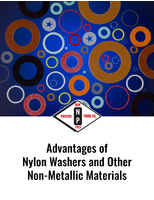Goodrich Celebrates 29 Years of Helping Save Lives with Advanced Concept Ejection Seats
Share:
9,000 seats delivered to customers worldwide since 1978, with over 500 successful ejections
CHARLOTTE, N.C., Sept. 24 / - Goodrich Corporation (NYSE:GR) is celebrating the genesis of its Advanced Concept Ejection Seat (ACES). Since its introduction in 1978, over 9,000 seats have been delivered to customers worldwide, with over 500 successful ejections.
The current generation of ACES seat, the ACES II®, is found on A-10, B- 1, B-2, F-15, F-16, F-22 and F-117 aircraft. The ACES tradition of safety and innovation continues today with the development of the latest generation of ACES seats, the ACES 5(TM). Currently in development, the ACES 5(TM) was engineered to safely eject the broader weight range of pilots flying today's fifth generation fighters and bombers.
Goodrich's ejection seats help pilots to exit an aircraft at high speed and high altitude in emergency circumstances. Designed with advanced sensors and a unique gyro-controlled system called a stability package, the ACES II® ejection seat is designed to function in zero-zero conditions - zero to 600 knots airspeed and zero altitude up to 60,000 feet. Because the human body is fragile when subjected to G-force stresses, the ACES II® has additional special features which help protect the occupant, including passive arm and leg restraints to reduce flail injuries, a survival kit, emergency oxygen for high-altitude ejections, and an enhanced drogue parachute system that stabilizes the seat and assists in deceleration.
According to Bob Sadler, Chief Engineer for Goodrich's Ejection Seat Systems team, "Each time we meet or hear from an ejection survivor, our passion for this business increases. We are delighted to be able to help protect those who serve their countries by giving them the opportunity to go home to their families, and then come back to fly another day."
Ejection seats would not be the engineering marvels they are today without the early technological developments that led to their creation. During World War One, parachutes were the first practical aircrew safety device to be used if a pilot had to escape an airplane. Then, starting in the late 1930s and during World War Two, both Germany and Britain devised seating systems that enabled the pilot to exit the cockpit.
In 1939, Germany's Luftwaffe Aviation Medicine branch began testing gravity forces and acceleration on the human body. It was at this time that compressed gas systems for ejecting aircrew seats were explored and explosive cartridge-propelled seats were first developed. On 13 January 1942, the first known emergency use of an ejection seat occurred during a test flight of a Heinkel He-280 jet fighter. By the end of the war, Luftwaffe Aviation Medicine branch counted over 60 successful ejections.
After World War Two, it was soon determined that an advanced, lighter weight ejection system with explosive components needed to be explored and perfected. The U.S. Navy and U.S. Air Force became involved in the design, development and production of ejection seats, and created a prototype that incorporated seat-type personal parachutes. Following testing in 1946 on board a modified P-61B Black Widow, the Republic F-84 Thunderjet became the first production American jet fighter to be outfitted with an ejection seat. The first rocket catapults were introduced to American ejection seat designs in 1958 when the Convair F102 Delta Dart became the first aircraft fitted with a rocket catapult-propelled seat.
The Advanced Concept Ejection Seat was developed by Douglas Aircraft Company in the 1960s. The seat entered production as ACES II® in the mid- 1970s and initially flew on A-10 and F-15 aircraft.
At nearly the same time, Stencel Aero Engineering Corporation developed the SIIIS family of ejection seats. Comparable in performance to the ACES II® ejection seat, the SIIIS incorporated several then unique features including the first use of a twin-tube catapult, twin-seat back rockets to supplement the catapult, and the DART (Directional Automatic Realignment of Trajectory) system to provide roll and pitch stability. The SIIIS entered production for the USMC AV-8A Harrier in the early 1970s.
In 1998, Goodrich purchased Universal Propulsion Co, Inc. which produced the Stencel SIIIS family of ejection seats. In November 1999, Goodrich purchased the ACES II® ejection seat product line from Boeing which had acquired the product line with its purchase of the McDonnell Douglas Aircraft Company.
Goodrich Corporation, a Fortune 500 company, is a global supplier of systems and services to aerospace, defense and homeland security markets. With one of the most strategically diversified portfolios of products in the industry, Goodrich serves a global customer base with significant worldwide manufacturing and service facilities. For more information visit http://www.goodrich.com/.
Source: Goodrich Corporation; GR - Nacelles and Interior Systems
CONTACT:Lisa Bottle, +1-704-423-7060, or at AFA (Goodrich Booth #3603):
Laura Neel, +1-480-227-9252, both of Goodrich Corporation
Web site: http://www.goodrich.com/




